
4 Ways Corporate Leaders Can promote deIB WIthIn theIr CompanIes - Nicola Harris, Chief People Officer, Unispace 16 10 23 31 maintaining deI&B Initiatives In Challenging times - Abraham Gonzales-Pollick, Vensure Employer Solutions 8 deIB Best practices For Leaders - Brett Farmiloe, Terkel.io Using Independent Contractors to Build a diverse Workforce For de&I success - Giselle Mota, ADP Using Innovation principles to Improve deIB outcomes - Susanne Tedrick, Innovating for Diversity APRIL 2023 • Vol. 40 • No. 04 (ISSN 2562-0711)
On the Cover Articles
13 Why Leadership Requires More Than Wielding An Obi-Wan Kenobi Lightsaber
Culture-driven leadership for hybrid model success


- Jason Richmond, CEO and Chief Culture Officer, Ideal Outcomes, Inc
19 Leading Through Volatility: Creating Inclusivity Out Of Uncertainty
Mitigating risk, encouraging collaboration, and thriving through change
- Natasha Nicholson, Director, Content Marketing, Kantola Training Solutions
28 Best DEIB Practices From A DEIB Facilitator
A disability approach
- Sydney Elaine Butler, Founder, Accessible Creates
34 Why Do We Expect So Little From Leadership Development?
A systematic approach for maximum impact
- Frank Devine, Founder, Accelerated Improvement, Ltd.
4 Ways Corporate Leaders Can promote deIB Within t heir Companies
How DEIB helps to create workplaces that foster innovation and growth
- Nicola Harris, Chief People Officer, Unispace
37 The Role Of Intersectionality In The Workplace To Promote Inclusion For All Moving beyond labels
- Dr. Liz Wilson, Founder, Include Inc.
06 I nde X
Leadership Excellence APRIL 2023 Vol.40 No.04 (ISSN 2562-0711)
Maintaining DEI&B Initiatives In Challenging Times
Why businesses should continue investing in DEI&B initiatives and how technology can help
- Abraham Gonzales-Pollick, VP, Client Development, Vensure Employer Solutions
8 DEIB Best Practices For Leaders
Strategies for achieving real diversity, equity, inclusion, and belonging in the workplace
 - Brett Farmiloe, Founder/CEO, Terkel.io
- Brett Farmiloe, Founder/CEO, Terkel.io
Using Independent Contractors To Build A Diverse Workforce For DE&I Success



Do not overwork your employees while you try to fill open positions
- Giselle Mota, Chief of Product Inclusion, ADP
Using Innovation Principles To Improve DEIB Outcomes
A fresh approach for leaders to achieve meaningful and impactful change
- Susanne Tedrick,
Co-author, Innovating for Diversity
INDEX Top Picks 10 16 23 31
Editorial Purpose
Our mission is to promote personal and professional development based on constructive values, sound ethics, and timeless principles.
Excellence Publications
Debbie McGrath CEO, HR.com - Publisher
Sue Kelley Director (Product, Marketing, and Research)
Babitha Balakrishnan and Deepa Damodaran
Excellence Publications Managers and Editors
Leadership Excellence Team
Babitha Balakrishnan Editor
Chinnavel Design and Layout (Digital Magazine)
Chandra Shekar Magazine (Online Version)
Submissions & Correspondence
Please send any correspondence, articles, letters to the editor, and requests to reprint, republish, or excerpt articles to ePubEditors@hr.com
For customer service, or information on products and services, call 1-877-472-6648
For Advertising Opportunities, email: sales@hr.com
Leadership Excellence (ISSN 2562-0711)
debbie mcgrath Publisher, HR.com
Babitha Balakrishnan Editor, Leadership Excellence

deIB in the modern Workplace: strategies and Best practices for success
Diversity, equity, inclusion, and belonging (DEIB) are of utmost importance in the workplace and cannot be emphasized enough. As the world becomes more diverse and inclusive, organizations must prioritize DEIB initiatives to create an environment where all employees feel valued and heard. However, implementing DEIB best practices can be challenging, especially for organizations transitioning from the old guard to the new.
To promote productive DEIB efforts in the workplace, leadership must create a culture that values diversity and fosters innovation and growth. This includes implementing inclusion and belonging programs and resource groups to create a more connected workforce, especially in a hybrid work model. Organizations should also regularly evaluate their DEIB programs, backed by data, to ensure they align with the organization’s values and people. DEIB is not a separate silo; it should be woven into all processes and part of the company culture.
A few DEIB best practices that workplaces could follow include avoiding a sole focus on public image, showing inclusivity with holiday observances, educating employees on true DEIB culture, going beyond training events, showing support through active allyship, encouraging an open dialogue, avoiding unconscious bias in hiring, and adopting a diverse recruiting process.
Additionally, organizations must also focus on supporting individuals with disabilities and neurodivergent employees in the workplace. Legislation is a critical part of aiding disabled and neurodiverse employees in the workplace, but organizations must do more to remove barriers and provide the necessary support for these individuals
Innovation can also be applied to DEIB efforts, using principles such as courage, risk-taking, collaboration, trust, and leadership to create meaningful and impactful DEIB programs.
The April edition of Leadership Excellence includes informative articles that focus on the critical nature of diversity, equity, inclusion, and belonging in the modern workplace.
4 Ways Corporate Leaders Can Promote DEIB Within Their Companies by Nicola Harris from Unispace outlines how leadership can promote diversity, equity, inclusion, and belonging efforts in the workplace through four key strategies.
Maintaining DEI&B Initiatives In Challenging Times by Abraham Gonzales-Pollick from Vensure Employer Solutions describes the importance of continuing to invest in DEI&B initiatives in businesses, especially in challenging times, and how technology can help in growing and developing these programs.
Terkel.io’s Brett Farmiloe in his article, 8 DEIB Best Practices For Leaders, shares strategies and best practices for achieving real diversity, equity, inclusion, and belonging in the workplace, as suggested by eight different leaders.
Using Independent Contractors To Build A Diverse Workforce For DE&I Success by Giselle Mota from ADP suggests using independent contractors to diversify the workforce and achieve DE&I goals while preventing burnout in the W-2 workforce during realignment.

Overall, prioritizing diversity, equity, inclusion, and belonging initiatives in the workplace is crucial to creating an environment where all employees feel valued and heard. However, implementing DEIB best practices can be challenging, and organizations must be committed to creating a culture that values diversity and fosters innovation and growth.
We hope you find this edition’s expert articles on DEIB informative and insightful. As always, we look forward to your valuable suggestions and feedback on our ePublications.
Happy Reading!
HR.com
56 Malone Road, Jacksons Point, Ontario L0E 1L0 Internet Address: www.hr.com
Disclaimer: The views, information, or opinions expressed in the Excellence ePublications are solely those of the authors and do not necessarily represent those of HR.com and its employees. Under no circumstances shall HR.com or its partners or affiliates be responsible or liable for any indirect or incidental damages arising out of these opinions and content.
edItor’s note
OR
in
form
Copyright © 2023 HR.com. No part of this publication may be reproduced or transmitted
any
without written permission from the publisher. Quotations must be credited.
published monthly
is
by
Limited,
Subscribe now for $99 / year And get this magazine delivered to your inbox every month Become a Member Today to get it FREE! SIGN UP Write to the Editor at ePubEditors@hr.com
In a world of unparalleled challenges (global pandemic, racial injustice, political rivalry, digital 4.0, emotional malaise), uncertainty reigns. Finding opportunity in this context requires harnessing uncertainty and harnessing starts with reliable, valid, timely, and useful information. The Excellence publications are a superb source of such information. The authors provide insights with impact that will guide thought and action.

Excellence publications are my ‘go-to’ resource for contemporary and actionable information to improve leadership, engagement, results, and retention. Each edition offers rich and diverse perspectives for improving the employee experience and the workplace in general.


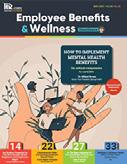





I regularly read and contribute to Leadership Excellence and Talent Management Excellence. I use many of the articles I read to augment my own presentations and I often share the articles with my clients. They are always quick, right on target for the latest issues in my field, and appreciated by my clients. If you want to stay up to date on the latest HR trends, choose a few of the different issues from the Excellence series of publications.






 Dave Ulrich
Rensis Likert Professor, Ross School of Business, University of Michigan Partner, The RBL Group
Julie Winkle Giulioni Author, Virtual /Live Keynote Presenter, Inc.’s Top 100 Leadership Speakers
Dr. Beverly Kaye CEO, BevKaye&Co.
Dave Ulrich
Rensis Likert Professor, Ross School of Business, University of Michigan Partner, The RBL Group
Julie Winkle Giulioni Author, Virtual /Live Keynote Presenter, Inc.’s Top 100 Leadership Speakers
Dr. Beverly Kaye CEO, BevKaye&Co.
WHY EXCELLENCE PUBLICATIONS?
We’re eager to hear your feedback on our magazines. Let us know your thoughts at ePubEditors@hr.com
4 Ways Corporate Leaders Can promote deIB Within t heir Companies
how deIB helps to create workplaces that foster innovation and growth
By Nicola Harris, Unispace
Diversity, equity, inclusion and belonging (DEIB) are essential elements of modern workplace practices and are vital in creating an inclusive and productive environment where everyone feels valued and heard. By implementing DEIB best practices, leadership can create a workplace that values all employees and fosters innovation and growth.
There are several best practices around DEIB initiatives: setting clear goals and expectations; educating and training employees to foster a culture of inclusivity; implementing equitable policies and practices; holding yourself (and others) accountable; measuring your accountability; and listening to and engaging with underrepresented groups. In addition, fostering allyships where employees of all backgrounds support and advocate for one another, and remembering to
continuously improve your practices and seek feedback from employees on your progress is also key.
When dealing with the transition between the old guard and new guard, implementing DEIB can be challenging. In the past, positions of leadership were held mostly by individuals who did not come from diverse backgrounds and who, as a result, found it difficult to understand the struggles faced by minority groups and did not make an effort to prioritize DEIB initiatives. Here are four key ways that leadership can promote productive DEIB efforts in the workplace.
1. Unlearn your Unconscious Biases
Thanks in part to the Covid-19 pandemic, DEIB has recently become an integral part of the workplace, to the point where even “old guard” companies
are starting to embrace change and create a more diverse and inclusive work environment.
One of the most significant actions a company can take in the area of DEIB is providing equal access to opportunity and experience—and this is something virtual working has helped with. Working remotely enables individuals from diverse backgrounds access to a much wider variety of job opportunities and enables them to gain valuable experience they may not have otherwise been able to. At Unispace, we create real learning experiences through our UniLearn platform to help them do their best work. This has been especially beneficial for those with disabilities, for whom going into the office is difficult or impossible. Going virtual eliminated that barrier and made it possible for more people to contribute to their organization’s success.
Leadership Excellence presented by HR.com April 2023 6 Submit Your Articles
CoVer artICLe
But even with remote work, as more companies discuss back-to-office policies, unconscious bias persists. Many in leadership positions still believe remote workers are less committed or less productive than those who go to work physically, even though this bias is largely unfounded. Remote workers can be more productive than those who work in a traditional office environment due to the reduction of distractions that plague an office space, especially a poorly designed one. Additionally, remote workers often have greater job satisfaction due to their more flexible work schedule, which can lead to an increased commitment to the company they work for. To combat this
antiquated idea, it’s crucial that companies shift their culture to be more accepting and inclusive of remote work as a valid and highly valuable option for employees.
To further combat unconscious bias and foster psychological safety, we have established We. Belong: Diversity, Equity Inclusion and Belonging training. We believe to truly embed DEIB principles in a business, people first need to feel safe to be themselves and creating safe places to be seen and heard without fear is a critical component of this. We wanted to ensure everyone, but especially leadership, understood what it means to feel safe to express themselves freely and understand how to build a culture where
individuals are accountable for their own unconscious biases. Unique to Unispace, We. Belong. is a program of facilitated workshops and self-learning modules for all colleagues across our company.

1. Expand the Definition of deIB
While much of the conversation about DEIB centers around race or ethnicity, DEIB as a concept is much broader and encompasses a wide range of experiences and identities beyond that. For that reason, any policies or initiatives a company sets out to implement should aim to create a welcoming and inclusive environment for everyone, regardless of their background or personal circumstances.
Leadership Excellence presented by HR.com April 2023 7 Submit Your Articles 4 Ways Corporate Leaders Can Promote DEIB Within Their Companies
It is also important to recognize that people’s experiences with DEIB can vary greatly, even if they are within the same group. For example, two working parents of different genders may have wildly different experiences. Alternatively, someone with an anxiety disorder may have an entirely different experience in the workplace than someone with an identical background without anxiety, and they would have different needs and preferences when it comes to communication or social interactions.
This is one of the reasons we believe it is important to partner externally with suppliers and other organizations around diversity. For example, at Unispace, we have established partnerships with key agencies and organizations, such as WEConnect International, Disability:IN, National Minority Supplier Development Council (NMSDC), National LGBT Chamber of Commerce (NGLCC), Women’s
Business Enterprise National Council (WBENC) among others, to help us identify, engage and hire diverse vendors.
DEIB is not a one size fits all approach – aiming to understand and accommodate the needs and experiences of a diverse range of individuals is the whole point.

2. remember Collaboration is a part of the process
One key element in DEIB practice is collaboration, which is essential to foster an environment where individuals from diverse background can share their perspectives and experiences. Doing so allows for a wider range of ideas and solutions to present themselves, which can lead to better outcomes and help break down silos to promote a culture of inclusivity.
Improved decision-making and problem-solving is a key outcomes of having a diverse
employee base. This is better for the business overall, as having people of many different backgrounds coming together encourages more critical thinking and analysis as they consider a wider range of factors and perspectives. Diversity can also help teams identify problems or find solutions that may have been overlooked otherwise.
Creating a sense of belonging is another important point to keep in mind. When employees feel like they are part of something bigger than themselves, and that they are valued and appreciated for their contributions, they are more likely to stay with the organization, and contribute to its success and the organization will experience less turnover than those who aren’t DEIB focused. This is why at Unispace we have created Employee Resource Groups (ERGs), such as Women at Unispace ERG and our Parents and Caregivers at Unispace
Leadership Excellence presented by HR.com April 2023 8 Submit Your Articles
4 Ways Corporate Leaders Can Promote DEIB Within Their Companies
ERG, which foster forums for engagement, learning, exploration, community, and action for all employees. We recognize that support from the top is critical for emphasizing the importance and setting the tone for these initiatives, so we have a member of the C-Suite who serves as Executive Sponsor for each ERG. Together, members directly impact the course of Unispace’s DEIB program and our wider business strategy.
3.
set a Good example
Leadership plays a crucial role in setting the tone for an organization. Leaders should model inclusive behaviors and prioritize initiatives that inspire others to create a culture of inclusivity. There is also power in active allyship and not in just assuming people are safe to be
who they are at work. In other words, leadership must walk the walk.
We are proud that Unispace CEO Steve Quick signed the CEO Action for Diversity and Inclusion, which is the largest CEO-driven business commitment to advance diversity and inclusion within the workplace. We hope that openly sharing our strategic actions, it will encourage others to make the pledge and help develop their organizational DEIB goals.
Companies that prioritize diversity and DEIB initiatives are viewed more positively by customers, employees, and other stakeholders, which can lead to a better reputation and brand image and increased loyalty and trust. In addition, companies with diverse team are better able to meet the


needs of their customers, which are likely composed of people from different backgrounds.
One of the biggest hindrances to this process is not recognizing the need for change or growth. Organizations must be willing to learn from their mistakes, admit those mistakes, and strive to improve their DEIB initiatives continually. Sometimes that also means being open to criticism and feedback, making changes as necessary, and continuing the process of education.
DEIB best practices are essential in creating a productive workplace, and those who embrace change and prioritize DEIB initiatives will come out on top. They will succeed because they are providing access to opportunity, promoting collaboration, creating a sense of belonging sparking increased innovation and better decisionmaking, and overall, creating a culture that benefits everyone.
The views expressed in this column are the author’s own and not that of HR.com
Would you like to comment?
Leadership Excellence presented by HR.com April 2023 9 Submit Your Articles
Nicola Harris is the Chief People Officer at Unispace
4 Ways Corporate Leaders Can Promote DEIB Within Their Companies
maintaining deI&B Initiatives In Challenging t imes
Why businesses should continue investing in deI&B initiatives and how technology can help
 By Abraham Gonzales-Pollick, Vensure Employer Solutions
By Abraham Gonzales-Pollick, Vensure Employer Solutions
Now is not the time to pump the brakes on your Diversity, Equity, Inclusion and Belonging (DEI&B) efforts.
As businesses become more diverse and rightly hold themselves to higher standards, organizations seek solutions to create more welcoming workplace environments. Hitting the brakes now could disrupt progress and undermine your long-term efforts.
Progressive DEI&B initiatives can help organizations better understand and serve their employees, customers and clients, and communities. This in turn increases employee engagement, customer loyalty, and brand trust as well-run initiatives serve as a key differentiator for your company, especially small- and
medium-sized businesses (SMBs). Plus, it’s vital to continue attracting top talent to remain a sustainable and thriving organization, especially in an economic downturn when other companies are tightening their budgets and cutting key initiatives.
When thinking critically about your DEI&B programs, it’s optimal to tie each aspect to the goals and objectives within your organization:
● Diversity: Where are the key learnings taking place, and how do they align with the company culture? How is this seen and felt within the organization? Can the initiatives be measured or can we show progress toward the objectives?
● Equity: What is the strategy for ensuring equity in every aspect of the employee lifecycle?
● Inclusion: What programs, opportunities, and activities are needed to create inclusion and belonging?
● Belonging: How are employees feeling, based on their feedback, about the workplace culture as a result of initiatives put in place?
DEI&B initiatives are not a one-size-fits-all solution for organizations across industries or geographic locations. Budgets, how you welcome contributions
Leadership Excellence presented by HR.com April 2023 10 Submit Your Articles
top pICK
and ideas from your employees, and responsibilities within certain roles are some factors that need to be considered for any DEI&B initiatives.
No matter what angle you approach DEI&B, it should always be viewed through a lens of deep thought, grace, and authenticity. In a time when it is tempting for organizations to tighten budgets, strong DEI&B initiatives can help your business cut through the noise, but it requires doubling down and continuing to back positive change. New technology can help by providing the data you need to measure success and progress without bogging down employees and pulling them away from their highest and best use.
Use technology to Back deI&B Initiatives
Modern HR technology makes your DEI&B programs more effective and engaging for remote and on-site employees alike. For example, using an all-in-one HR platform allows your organization to make decisions faster, with better, more measurable outcomes and the same unified program regardless of work location. When initiatives are taking place, or there is a change, having concrete data in real-time influences your strategy and approach to show how your greatest assets—people— and help you speak to important topics more authentically.
While having some technology is better than nothing, modern HR solutions can help your business train employees to handle difficult scenarios, communicate more regularly to ensure awareness of measurable progress, solicit feedback from employees and clients/customers, and promote action regularly to facilitate equity and inclusiveness.
As companies hone in on their needs, implementing a unified platform allows for in-depth key learnings and strategies for inclusion and belonging programs. Plus, you can then audit results and focus on areas needing improvement, or departments needing additional training.

Data is power. The more information you have on what your organization does and doesn’t do well, the more you can understand where your programs need to pivot or evolve and what needs to be taught to create a more inclusive work environment. Technology advises your strategies and makes it easier to see where you should focus.
Let’s examine employee pay, for example. Looking at how individuals across your organization are compensated sheds light on how equitable your pay structure is in practice and if and where there are gaps. New hires will be looking closely at this in 2023 and beyond, especially as regulations roll out in select
Leadership Excellence presented by HR.com April 2023 11 Submit Your Articles
Maintaining DEI&B Initiatives In Challenging Times
areas across the US. With varying state-mandated pay transparency laws, businesses need to get ahead of this curve sooner than later, or top talent will stop applying or leave the organization.
All employees need equal access to the tools and resources provided to maximize their potential and create a great customer experience. This is part of why having a unified platform for your digital communications is so effective. With the wrong tech tool, insufficient communication and data collection could negatively impact the organization’s ability to meet employees where they are and serve customer needs. Employees are then left feeling left out or left behind, which in time undermines the entire business culture. Resources promoting DEI&B and personal growth have become non-negotiable for employees, and they want access in real-time.
In addition, modern HR tech tools can help bring a level of consistency to the way you communicate about DEI&B initiatives with all employees, no matter their work location.
Brand reputation & measuring Growth

Your employees are the most important part of your business. Employee engagement can ultimately push your brand forward or halt your organization’s growth. That’s why benchmarking progress is vital to ensure you’re moving forward.
There are many ways to measure the effectiveness of your DEI&B efforts, but one of the best sources is to look at the feedback data to see and hear what your employees are saying. Create opportunities for dialogue and the exchange of ideas, because your employees represent the customers you serve and you must show them their voice matters to keep them engaged. If you don’t address the needs of your own people and hold them accountable, you risk long-term damage to the brand.
Looking Ahead: Supplementary Benefits
Aside from these more standard tools and resources for employees to feel supported, organizations should consider providing access to these popular incentives and benefits, including:
● Additional paid time off for religious holidays or volunteering opportunities
● Employee assistance programs
● Recognition programs for high-performing employees & top customers
● Learning and development reimbursements
● Flexible schedules and work location options
These are just a few of the most prominent suggestions for 2023, as we have seen an increase in demand for these types of benefits so employees can feel engaged and connected to company values and purpose while living a more balanced, fulfilling lifestyle.
Inclusion and belonging programs, along with resource groups, are a great way to give your employees something to connect to, be inspired by, and a safe place to share their story for others’ benefit. This is priceless to create a more connected workforce, especially in a hybrid work model!
Is your organization making the space and allocating resources for such programs? How do your programs drive the business forward? These questions should be asked regularly and the responses should be backed by data.
As businesses evaluate their DEI&B programs going into 2023—growing existing efforts and starting new initiatives—it’s important to remember that one solution doesn’t fit all, and these programs should be a reflection of your organization’s people and values, approached with empathy and understanding for the individuals these programs effect.
Would you like to comment?
Leadership Excellence presented by HR.com April 2023 12 Submit Your Articles
Maintaining DEI&B Initiatives In Challenging Times
Abraham Gonzales-Pollick, is the VP of Client Development for Vensure Employer Solutions.
Why Leadership requires more t han Wielding an obi-Wan Kenobi Lightsaber
Culture-driven leadership for hybrid model success
 By Jason Richmond, Ideal Outcomes, Inc.
By Jason Richmond, Ideal Outcomes, Inc.
For organizations to stand out as extraordinary forwardthinking achievers take some doing. That’s because we live in a highly volatile economic environment and an increasingly diverse society, which creates vast
differences in how people see the same things.
Companies face the challenge of embracing variance while finding common ground to promote inclusion. Moreover, the latter
cuts two ways: They must engage employees to establish long-term retention while developing cast iron brand loyalty in a marketplace with multiple customer segments. Organizational culture, therefore, must converge on minimizing employee and customer churn, both of which are revenue bottom-line destroyers.
The subject is complex, and for this article, we primarily focus on how it relates to employees.
The so-called “Great Resignation,” amid growing labor demand and the lowest unemployment rate in decades, was a flashing signal that employees were no longer simply happy to have a job and a steady income. This ground-shifting event resulted in millions of workers voluntarily leaving companies faster than they could be replaced.
Leadership Excellence presented by HR.com April 2023 13 Submit Your Articles
The fallout: close to eleven million job openings versus around six million new hires—a 43% gap in our ability to:
● Reestablish project continuity and team harmony.
● Ensure supply chain functionality.
● Reassure customers of seamless service and support.
● Fortify data assets from cybersecurity attacks.
● Uphold the ROI and EBITDA metrics that stakeholders expect.
These elements are the tip of a massive iceberg that unwary businesses are smashing into left, right, and center. It translates into CEOs and management teams floundering for answers to many perplexing questions, discovering that the “same-old, same-old” band-aid solutions don’t even scratch the surface.
Some leaders wield “compensation” like Obi-Wan Kenobi’s magical lightsaber expecting or hoping its
“kyber-crystal” power can conquer anything. Instead, all it means is that organizations pay more to retain disengaged employees already on the cusp of leaving or to lesser talent replacing their disgruntled predecessors. The result is a drop in productivity and an increase in labor overhead—a double-whammy hit to net profit.
It doesn’t take a genius to figure out that salary structuring alone, while crucial, is not the entire answer. Writing bigger checks doesn’t address:
● The unstoppable trend toward remote working.

● Relieving high-pressure stress from working untenable hours.
● Stemming the churn rate that has nothing to do with remuneration.
● So what’s in the cards for leadership success in a changing cultural environment?
Compensation packages
Are you asking the kinds of questions about compensation packages that leaders in
organizations spearheading industry change are asking?
1. What’s the market paying top-skilled workers in a world where compensation transparency is the order of the day?
2. Given that there’s no such thing as package confidentiality, how will I adjust all salary scales in light of offers to new hires?
3. To what extent can I use outside contractors on a freelance basis as a parallel strategic workforce, erasing costs like sick leave, office rental, leave pay, and so on?
4. Can I inject additional benefits with a compelling monetary significance into the formula such as paying for or subsidizing:
a. Housekeeping/ cleaning services.
b. Fitness center memberships.
c. Childcare services.
d. Mental health therapies.
Leadership Excellence presented by HR.com April 2023 14 Submit Your Articles
Why Leadership Requires More Than Wielding An Obi-Wan Kenobi Lightsaber
Culture-Centric Initiatives
These “additional benefits” connect entirely to employee lifestyle preferences. From this, cultural attitude and leadership merge inextricably at the remote/ hybrid work platform, which is not going away.
Organizational leaders making waves in their industries have embraced remote work full-time for specific employees and hybrid models for others. If you’re only starting to come to grips with the shift, time is limited and working against you.
A recent AT&T study, for instance, predicts the hybrid work model will double in size between 2022 and 2024 reaching 81% popularity while a FlexJobs’ Employee Engagement Report says that nearly half the workforce is already one-way operating—and learning—within a hybrid model.
My team and I at Ideal Outcomes, as culture change consultants who deliver training both in-person and online, have seen it all. What we’ve experienced recently is that companies and employees have embraced remote learning. Two-thirds of our clients continue to use our instructor-led interactive online courses for a variety of reasons including cost-effectiveness, time savings and convenience. Moreover, technology has improved to enhance the online experience and employees have
become used to this format. The barriers are down.
It’s a mind-boggling cultural shift that has changed how companies do business, lease real estate, engage with customers, and hire and retain employees, as well as train them. Only stubborn traditionalists fail to appreciate that, outside of factories, while physical office presence has many obvious benefits it does not necessarily coincide with increased productivity.
The hybrid work model bandwagon is rolling down the tracks at an accelerating pace. All aboard are brand leaders such as Adobe, Salesforce, Airbnb, Allstate, Amazon, Ancestry.com, Citi, Dell Technologies, Google, and Salesforce. If this isn’t a neon-lit confirmation of leadership direction and cultural demands, then nothing is. Statistics from a FlexJobs’ Career Pulse Survey dismiss any notion this could be a fad, finding:
● Nearly two-thirds of the respondents were vying for full-time remote working conditions.
● Another 32% required a hybrid model from their employer.
Finally, business leaders intent on a cultural approach that’s in tune with modern times should pay careful attention to Remote.co’s Work & Financial Wellness Report. It highlights that 63% of workers surveyed intended moving on if their current employer didn’t come
up with an acceptable hybrid proposal. Aside from that, they rated “Remote Work Options” as the #1 priority (84%), followed closely by “Salary” (81%) and “Work-Life Balance” (79%). Other drivers were:
● Work schedule (56%)
● Meaningful work (50%)
● Company culture (42%)
● Skills training (40%)
● Education options (40%)
● Career progression (40%).
Interestingly, “company culture” as an item was relatively low down the list. But you can take that with a pinch of salt because the entire list defines a company’s culture, starting with its flexibility to take all this seriously and adjust accordingly. Indeed, if hybrid models aren’t fundamentally ingrained in culture-driven leadership, the odds of success are somewhat remote!
Would you like to comment?

Leadership Excellence presented by HR.com April 2023 15 Submit Your Articles
Jason Richmond is the CEO and Chief Culture Officer at Ideal Outcomes, Inc.
e. Remote working offices and tech requirements.
Why Leadership Requires More Than Wielding An Obi-Wan Kenobi Lightsaber
8 deIB Best practices For Leaders
strategies for achieving real diversity, equity, inclusion, and belonging in the workplace
By Brett Farmiloe, Terkel.io
From maintaining implemented efforts to setting hiring goals, here are eight answers to the question, “What are DEIB best practices that workplaces should follow?”

● Don’t Focus Solely on Public-Image
● Show Inclusivity With Holiday Observance
● Educate Yourself on True DEIB Culture
● Go Beyond Training Events
● Show Support Through Active Allyship
● Encourage an Open Dialogue
● Avoid Unconscious Bias in Hiring
● Adopt a Diverse Recruiting Process
don’t Focus solely on public-Image
It looks good on paper for a company to announce new diversity, equity, inclusion, and belonging strategies in their workplace. This can generate a lot of publicity for the organization, especially if they are a pioneer in this change in their niche.
However, the true demonstration of DEIB lies in how well these efforts are being implemented. Monitoring the progress of your strategies allows leadership to identify areas that need improvement. Some leaders are only focusing on the public-image aspect of declaring a DEIB workplace. We forget these campaigns improve workplace happiness and employee well-being.
DEIB is still a relatively new concept for most industries, so many of these mishaps still go with just a slap on the wrist. Let’s consider revising the protocols for improving the actual results that these movements intend to yield.
Stephan Baldwin, Founder, Assisted Living Center

Leadership Excellence presented by HR.com April 2023 16 Submit Your Articles
top pICK
show Inclusivity With holiday observance
As a DEIB leader in the recruiting sphere, I’m all too aware that inclusivity doesn’t end with the hiring process. If workers don’t feel championed in the office, turnover rates will suffer, and sometimes it’s the little things that make a big difference.
One gesture that means a lot to workers is flexible holiday observance. Creating an inclusive space means understanding that cultures are unique in their celebrations.
It’s about more than simply placing a menorah next to the Christmas tree; leaders should ask workers about their preferred structure for things like holiday hours and PTO. Otherwise, they risk ramping up production just as the season begins for a contingent of employees.
Go Beyond training events
Organizations often make the mistake of thinking that hosting a training event is enough to tick a box, to say that they’ve completed DEIB for the year. DEIB shouldn’t only be accessible during a specific time frame.
It’s not as simple as booking training on a calendar. Rather, digital resources and opportunities to learn or discuss should be available
Jarir Mallah, HR Specialist, Ling App
show support through active allyship
Rob Reeves, CEO and President, Redfish Technology


educate yourself on true deIB Culture
It is important to make sure hiring processes and practices are equal and just in today’s workplace. I believe this has gained little traction in leadership because of a lack of understanding of its importance and potential benefits.

To solve this, leaders should attempt to educate themselves on DEIB and create a culture that puts DEIB into practice.
This is when individuals show their support for marginalized groups in tangible and consistent ways. It involves taking a stand in solidarity with those who experience stigma, marginalization, and discrimination.
Unfortunately, this has yet to gain much traction in leadership, likely because it requires a fundamental shift in how we think about diversity, equity, and inclusion in the workplace. Many leaders are uncomfortable with actively advocating for groups they don’t identify with.
To make active earlship more widely accepted and practiced in the workplace, I recommend educating leaders on its importance. Managers should know the value that active allyship brings to their teams, organizations, and communities.
Tawanda Johnson, HR and DEI Consultant, Sporting Smiles
 Karl Robinson, CEO, Logicata
Karl Robinson, CEO, Logicata
Leadership Excellence presented by HR.com April 2023 17 Submit Your Articles 8 DEIB Best Practices For Leaders
Dadashi, CEO, Infinite Recovery
avoid Unconscious Bias in hiring
Unconscious bias in hiring is easily one of the most common threats to a work environment committed to its DEIB efforts. In today’s workplace environment, committing to eliminating unconscious bias is even more critical because threats we are unaware of usually do more damage than visible ones. Adopting AI-enabled recruitment solutions that help us identify and eliminate such biases solves this problem.
The reason this hasn’t gained traction at the leadership level is that every organization operates on the assumption that, whether it is in hiring or any other people-oriented function, their company or its people do not discriminate.

Since unconscious bias does not sabotage the hiring chances of a particular candidate, it surfaces as
adopt a diverse recruiting process
While many companies try to adopt and promote an inclusive, diverse culture, many aren’t recruiting many diverse employees and are predominantly hiring non-minority groups.
I believe it has gained little traction because, while diversity is important, hiring the best talent is understandably equally important.
If most applicants were non-minorities, it would be a bigger challenge for companies to recruit minorities. I recommend setting hiring goals. Decide how many open positions you’d like to fill with a diverse workforce. Then, you can work with recruitment agencies that specialize in DEI to reach your goal and create a well-diverse work environment.

 Inbar Madar, Founder and Business Consultant, MI Business Consulting
Inbar Madar, Founder and Business Consultant, MI Business Consulting
Would you like to comment?

Leadership Excellence presented by HR.com April 2023 18 Submit Your Articles
Michael
Brett Farmiloe is the Founder/CEO and currently the CHRO of Terkel.io
8 DEIB Best Practices For Leaders
Leading t hrough Volatility: Creating Inclusivity out of Uncertainty
mitigating risk, encouraging collaboration, and thriving through change
 By Natasha Nicholson, Kantola Training Solutions
By Natasha Nicholson, Kantola Training Solutions
We’re living in a volatile time, experiencing serious global events and economic ups and downs. It leaves us wondering about what’s coming next. And the feeling of uncertainty that goes with it creates a sweeping undercurrent that can impact our decisions, our choices and affect the very culture of our organizations. It can stifle creativity, push back
innovation and crush morale. But none of that needs to happen.
There is a way to rise above pending turmoil and keep our organizations resilient, no matter what’s ahead. There is a way that we can help our organizations and our employees to not only survive but thrive—even
Leadership Excellence presented by HR.com April 2023 19 Submit Your Articles
in the face of uncertainty. And here’s something that might surprise you. The answer lies in our ability to build and maintain a culture of inclusivity, where all employees feel safe, respected and appreciated— and where awareness, empathy and transparency lead the way.
Let’s look at how inclusivity can support organizations during a time of change, how it mitigates organizational risk and go over five building blocks for achieving inclusive leadership under pressure.
Why Inclusivity matters now more than ever
During these times of uncertainty, our commitment to diversity, equity and inclusion (DEI) is put to the test. And there can exist a misapplied sense that when times are good, leaders can afford to focus on an inclusive culture, but when the stakes are high, priorities must shift to more pressing matters. But nothing could be further from the truth. There are some very compelling reasons why maintaining a culture of inclusivity is more important now than ever before. Here’s why.
an inclusive culture can help organizations to:
● Build trust and resilience in the face of challenges McKinsey researchers describe resilience “as the ability to deal with adversity, withstand shocks, and continuously adapt and accelerate as disruptions and crises arise over time.” Because inclusion means that everyone’s contribution is valued, it is closely tied to trust, an essential part of building resilience. Research finds that employees who trust their colleagues, managers, and leaders are an astonishing 42 times more likely to be highly resilient
● Apply innovative thinking and increase collaboration. Because inclusion requires having respect for our differences, it has the power to cut through siloes and enhance greater innovation and collaboration. Organizations with an inclusive culture are six times more likely to be innovative and agile and 75% faster at bringing products to market
● Thrive through adversity and futureproof the organization. Not only can inclusion help organizations to survive through difficult times, it can enable them to thrive. Research shows inclusion can improve team performance by up to 30 percent. And it can future-proof an organization for long-term resilience. Consider that inclusive organizations are an astounding 87% more likely to make better decisions.
Resilient organizations foster a diverse and inclusive workforce, one in which everyone feels included and is expected to perform their best even during times of crisis. These organizations’ cultures and processes foster security, belonging, and adaptability.
– Center for Strategic and International Studies
how Inclusivity mitigates risk
In addition to strengthening the business, evidence is mounting that inclusion can play a central role in mitigating both legal and strategic risk. And that’s something that is critical when organizations are already facing a slew of potential economic risks that are not within their control.
an inclusive culture can help organizations to…
● Prevent harassment. When employees are under stress, their behavior is affected. Consider research showing that stress can lead to increased instances of bad behavior and harassment in the workplace. Building awareness of what is and is not acceptable behavior in an inclusive culture can mitigate this risk.
● Avoid expensive, disruptive and damaging legal problems. The risk of bad behavior has fiscal consequences as well. Workplace misconduct cost U.S. businesses $20 billion and the EEOC reported $61.6 million in monetary benefits for harassment charges. And that’s just in a single year. Because inclusive culture instills the values of fairness, appreciation and respect it can save your organization from these costly situations.
Leadership Excellence presented by HR.com April 2023 20 Submit Your Articles Leading Through Volatility: Creating Inclusivity Out Of Uncertainty
" "
● Protect your reputation. Research by UCLA found that a single harassment claim “can be enough to dramatically shape public perception of a company and elicit perceptions of structural unfairness. In the public’s mind, there seems to be no such thing as a bad apple.” Organizations with inclusive cultures provide employees with the education and guidance they need to help prevent harassment.
● Reduce costly turnover. Inclusion is critical to retention. Research from a Deloitte’s survey revealed that 39% of employees said they would leave their current organization for a more inclusive one and 23% said they have already left because of a lack of inclusivity.
● Avoid loss of customers. “The American consumer is undeniably becoming more inclusive,” say experts at McKinsey. Research indicates that two out of three Americans say that their social values now shape their shopping choices—clearly showing that inclusion has as much impact externally as it does internally.
● Broaden a dwindling talent pool. Not having the talent you need to achieve the company’s goals is a major business risk. Creating an inclusive culture can make you an “employer of choice,” if you consider research from Monster.com showing that 86 percent of job seekers place a high value on inclusion and 62 percent would turn down an offer from a company that did not support inclusion.
5 Building Blocks for Inclusive Leadership—especially When you’re Under pressure
In a previous HR.com article, The Missing DEI Strategy: Cultivating Inclusive Leadership, we talked about the fact that inclusive leaders have a differentiating set of characteristics and behaviors. It starts with how they impart a sense of belonging that makes everyone feel like they are an important part of the organization. They know how to actively listen and show their own vulnerability in a way that engenders trust and supports employees to connect and share.
They are culturally and emotionally intelligent and use empathy to create strong bonds, supporting others to do the same. They see challenges as opportunities to grow and learn, putting the focus on rewarding and upskilling their workforce. They make employees feel safe to present their whole selves in the workplace.
For building an inclusive workplace in the face of uncertainty and pressure, these leadership qualities are critical. Here are the building blocks that can help you get there.

1. Balance confidence with vulnerability and empathy
The days of the tightlipped stalwart leader are over. Today’s leader must find the balance between being confident, vulnerable and empathetic. That means accepting and acknowledging that you may not have all the answers, but being confident that you will work to find the right solutions.
How: Become aware and attune to what it means to embody the values of an empathetic leader, including such qualities as honesty, transparency, authenticity and kindness.
2. Actively seek out input and ideas
In stressful situations, it can be hard to accept input. But the best leaders know that ideas and solutions around difficult problems can come from anywhere in the organization. When leaders and managers not only stay open to receiving input, but actively seek it out, problem solving can become a unifier that fosters greater collaboration throughout the organization.
Leadership Excellence presented by HR.com April 2023 21 Submit Your Articles
Leading Through Volatility: Creating Inclusivity Out Of Uncertainty
How: Create an ongoing feedback loop with employees (both formal and informal) to “crowdsource” potential solutions to organizational issues.
3. Build and mirror positive behaviors
Some conflict in the workplace is normal. But in a time of uncertainty when tensions run high, stress can take over. Conflict is more likely to give rise to negative behaviors that can damage workplace relationships. All employees, including leaders and managers, need guidance on how to effectively manage conflict, including the use of constructive feedback and effective communication techniques.
How: Tap into training and guidance you need to build and reinforce positive behaviors in stressful times, in yourself and your employees.
4. Focus on creating team psychological safety
HBR author Amy Gallo defines team psychological safety as, “…a shared belief held by members of a team that it’s OK to take risks, to express their ideas and concerns, to speak up with questions, and to admit mistakes—all without fear of negative consequences.” Psychological safety is also a critical part of inclusion that makes employees feel more engaged and motivated. It also leads to better decision-making and fosters a culture of continuous learning. One change to make in your behavior: replace blame with curiosity and kindness.

How: Take steps to assess whether your team feels psychologically safe and learn what behavioral changes you need to make to create this kind of team dynamic.
5. Put inclusive management into practice
Leaders and managers are an organization’s most important asset, especially in uncertain times. That’s because you are a primary organizational conduit, yielding influence in multiple directions—your team, peers and top leadership. And you play a critical role in creating a more diverse, equitable and inclusive work environment. You’ll just need to cultivate the awareness and get the education and support you need to get there.
How: Become educated in inclusive management practices with a focus on leading teams, making recruiting, hiring and onboarding decisions.
The building blocks above give you a glimpse into what it takes to create inclusivity out of uncertainty. But if there’s one thing to keep in mind above all else, it’s that inclusion is also a long-term solution. It works in volatile times because it unifies people and enables them to tackle difficult problems together. But it also impacts the future. Long after the economic twists and turns of the day have passed, inclusion will continue to help you reap rewards in the form of greater innovation, organizational resilience, employee commitment, talent retention and customer loyalty.
Natasha Nicholson is the Director of Content Marketing at Kantola Training Solutions, an innovative e-Learning company focused on diversity, equity and inclusion and harassment prevention. In her role, Natasha oversees content strategy, production and thought leadership. She also shares insights on topics such as talent management, inclusive workplace culture and DEI strategy. Her work has been featured in numerous publications, including VentureBeat, HR Dive, HR.com, Talent Management and Chief Learning Officer. Before joining Kantola, Natasha served as Content Director for the International Association of Business Communicators (IABC), and held an executive editor role with Communication World and Catalyst magazines.
Leadership Excellence presented by HR.com April 2023 22 Submit Your Articles
Leading Through Volatility: Creating Inclusivity Out Of Uncertainty
Would you like to comment?
Using Independent Contractors to Build a diverse Workforce For de&I success
do not overwork your employees while you try to fill open positions
By Giselle Mota, ADP
Bringing a more widely diverse set of workers into your organization not only enriches your talent pool and brings much-needed additional skill sets to an organization, but it can also offer a flexible route to staffing projects and roles while enabling an organization to work towards its DE&I goals.
Having a diverse workforce has never been more important for organizations looking to evolve and stay ahead of their game. And building such a workforce today is so much more than the typical indicators we envision when we think of diversity, equity, and inclusion (DE&I).
thinking Beyond the Form W-2 Workforce for Inclusive solutions
While the foundational pillars of DE&I, such as race, orientation, gender, and disability, are critical to building a diverse workforce, myriad other workers can enrich your team and help your business thrive. These workers may be found in your Form W-2 (i.e. full-time employee) workforce, but further enrichment can be found by hiring diverse independent contractors.
In doing this, you open your doors to a wide variety of workers who may not have otherwise been available. Think about retirees, caregivers, parents returning from work, neurodivergent candidates, veterans, and more. These workers bring different skills to the table that provide specific value. For example, a caregiver may have considerable experience dealing with multiple requirements at a time while on a very strict schedule; meanwhile, a neurodivergent candidate could bring an alternative perspective with different problem-solving skills to a project; and veterans are often equipped with strategy and project management skills.
Bringing a more widely diverse set of workers into your organization not only enriches your talent pool and brings much-needed additional skill sets to an organization, but it can also offer a flexible route to staffing projects and roles while enabling an organization to work towards its DE&I goals.
In addition, having a strong DE&I position offers appeal outside of your organization, giving your DE&I audience a sense of belonging and making your brand more inclusive and appealing. Meanwhile, being
Leadership Excellence presented by HR.com April 2023 23 Submit Your Articles
top pICK
intentional about inclusion efforts creates an internal environment that workers, especially those in underrepresented groups, want to stay in, do their best work in, and invite others to explore. These factors positively impact the organizational bottom line, along with employer brand perception.

Those organizations looking to build their DE&I environment via independent contractors of varying diverse categories can use technology in their DE&I journey. Such technology helps streamline processes, as well as enable organizations to be strategic about using independent contractors to achieve diversity goals.
the role technology plays
The flexibility hiring independent contractors can bring is enabled by technology in several ways. First, being able to organize your diverse independent workforce based on skills, location, demographic, availability, qualifications, and more makes it quick and easy to choose candidates for specific projects. It also gives you the ability to easily monitor your diverse hires and ensure your workforce is meeting its DE&I goals.
Additionally, using technology to create talent pools allows your independent contractors to self-identify
outside of the typical categories by allowing you to create pools of alternative skills. For example, LinkedIn recently created an option to add the skill “dyslexic thinking” to a candidate’s profile. This means organizations can now select people who offer the alternative skills associated with dyslexic thinkers may offer, such as creativity, alternative problem-solving skills, and so much more.
Self-identifying outside of standard categories also allows workers to be seen and included in a way that may be more important or relevant to them than traditional categories. Being able to share pronouns, for example, may make a worker feel more valued and included. Using technology that makes considerations for this Identification creates an organic opportunity to build a diverse workforce while making it known to new hires that they are joining an inclusive culture.
Further, using technology to build talent pools of independent contractors allows you to use that data to expand analytics on DE&I beyond your Form W-2 workforce. For example, you could report the number of diverse workers you have at any one time, as well as monitor data points such as how long the worker will be with the company, where they are based, what field they’re in and what qualifications they have.
Leadership Excellence presented by HR.com April 2023 24 Submit Your Articles
Using Independent Contractors To Build A Diverse Workforce For DE&I Success
attract new talent, the business has to continue. But in today’s climate, it’s critical not to overwork your employees while you try to fill open positions. Hiring a diverse, temporary workforce can be key.


Consider the following:
● Hire contractors to maintain business operations and support permanent staff.
● Diversity goals can take time. While you’re working towards those goals, contract workers can bridge skills gaps.
● Use contractors to fill positions that can be done on a contract basis, enabling you to use diverse talent that is seeking flexibility/short-term opportunities (for example, caregivers, retirees, parents returning to the workforce, etc.).
Using Contractors strategically
When aiming to reach DE&I goals, contractors can be used in several strategic ways to help you get there. Your organization may want to hire more from underrepresented groups (URGs) and will set percentage goals to do so. If your candidate pool for an accounting role does not include any who are people of color, for example, you could:
● Hire a contractor while you continue to expand your candidate pool. This buys time to source more full-time candidates from those URGs.
● Create a pipeline of URG candidates who start as contractors. For example, if you want to add more diversity to your accounting department, hire a contractor who represents a URG and has an adjacent skill set (i.e. bookkeeping). Treat this as an opportunity for upskilling, thus creating a potential URG candidate for the accounting team.
Companies grappling with the great realignment can use independent contractors strategically to help achieve DE&I goals, while also helping ensure that their Form W-2 workforce does not become burned out. As organizations continue to struggle to
Giselle Mota is the Chief of Product Inclusion at ADP. She serves as the Chief of Product Inclusion at ADP where she leads DE&I throughout the 200+ product portfolio, defining strategy and supporting product capabilities to ensure the organization designs with an inclusive mindset. Giselle helps drive adoption of DE&I capabilities within our product offerings, ensuring a seamless end-to-end experience for clients and users. She extends her focus on inclusion beyond ADP. She is also the creator of NFTY Collective, which focuses on bringing disability inclusion into emerging technologies of web3 and metaverse.
Would you like to comment?
Leadership Excellence presented by HR.com April 2023 25 Submit Your Articles
This story was originally published on SPARK, a blog designed for you and your people by ADP®.
Using Independent Contractors To Build A Diverse Workforce For DE&I Success
HRCI® & SHRM® CERTIFICATION PREP COURSES
GROUP RATES AVAILABLE
For HR Professionals
Show that management values the importance of the HR function, and has a commitment to development and improvement of HR staff.
Ensure that each person in your HR department has a standard and consistent understanding of policies, procedures, and regulations.
Place your HR team in a certification program as a rewarding team building achievement.
For Your Organization
Certified HR professionals help companies avoid risk by understanding compliance, laws, and regulations to properly manage your workforce.
HR Professionals lead employee engagement and development programs saving the company money through lower turnover and greater productivity and engagement.
A skilled HR professional can track important KPIs for the organization to make a major impact on strategic decisions and objectives, including: succession planning, staffing, and forecasting.
HR.com/prepcourse CALL TODAY TO FIND OUT MORE 1.877.472.6648 ext. 3 | sales@hr.com
1 Less expensive than a masters or PhD program, and very manageable to prepare with
2. legislation and best practices
3. Recognized, Industry benchmark, held by 500,000+ HR Professionals
Group Rate Options
We offer group rates for teams of 5+ or more for our regularly scheduled PHR/SPHR/ SHRM or aPHR courses.
For groups of 12+, we can design a more customized experience that meets your overall length of the course.
Groups rates for HRCI exams are also available as an add-on.
All group purchases come with 1 year of HR Prime membership for each attendee to gain the tools and updates needed to stay informed and compliant

CALL TODAY TO FIND OUT MORE 1.877.472.6648 ext. 3 | sales@hr.com | HR.com/prepcourse
1 2 3
Best deIB practices From a deIB Facilitator
a disability approach
By Sydney Elaine Butler, Accessible Creates
DEIB stands for Diversity, Equity, Inclusion, and Belonging. There are a lot of acronyms that are synonymous with this, but belonging is a critical part of businesses and HR to ensure that organizations and their culture are inclusive. Belonging means that employees feel like they actually belong within the organization and in their roles. Diversity is the range of human differences. Equity is the notion
of having fair and impartial opportunities within an organization or system. Inclusion is the act of creating an environment where all individuals feel welcomed, supported, and valued.

disability Focus
A focus of DEIB that is often overlooked but is starting to get focused on is people with disabilities. There is a
Leadership Excellence presented by HR.com April 2023 28 Submit Your Articles
lot of work to be done to remove barriers and support people with disabilities. There are a lot of people with disabilities and people who are neurodivergent in the workplace but do not get the support and have to struggle in the workplace and chose not to disclose for fear of losing their jobs. Therefore, companies and HR leaders, and professionals need to be able to know how to better support these individuals in the workplace. Legislation is a critical part of helping to aid disabled and neurodiverse employees in the workplace, but it is very vague and is the bare minimum of the organization’s role in supporting disabilities in the workplace.
Best practices
Attract and Recruit Diverse Talent

● Evaluate the visuals and the language used in the job description are inclusive for all diverse candidates. It is important to find channels of job boards that are more inclusive such as Microsoft’s career connector for Neurodiverse candidates, but also ensure that the job descriptions and ads use inclusive language and plain language to attract diverse candidates..
● Ensure that you have equity and accommodation statements on your career pages to show and be transparent about how your company goes about being accessible and inclusive to all candidates. Accommodation statements should also be directly on the job description at the top so it is seen as a priority rather than an afterthought.
eliminate Barriers during Interviews and hiring
● Ensure closed captions and transcriptions are available for the candidate to turn on if they need them.
● Share questions ahead of time when you ask the candidate for an interview.
● Be willing to provide ample time to answer questions and modify questions as needed.
Facilitate Inclusive Onboarding
● Have Disability Awareness Training when employees first join the organization.
● Let new employees know about Employee Resource Groups (ERGs) and how they can get involved.
● Have people know how your company supports and accommodates people with disabilities.
● Come up with a support plan for employees with disabilities and/ or who are neurodivergent.
Learning and development
● Provide training on Disability Awareness, Neurodiversity and have conversations on these topics, and understand the role everyone plays in supporting this in the workplace.
● Keeping current with trends regarding DEIB and Disability Issues in the workplace.
● Have Disability and Neurodiversity ERGs that are at least 50% employees with lived experience as a lot of times it is parents of disabled and neurodiverse which is important but lived experience should be the leading force of these ERGs
Would you like to comment?
Leadership Excellence presented by HR.com April 2023 29 Submit Your Articles
Best DEIB Practices From A DEIB Facilitator
Sydney Elaine Butler is the Founder, as well as a Freelance Accessibility and Neurodiversity Speaker and Consultant at Accessible Creates

Leadership Excellence presented by HR.com April 2023 30 Submit Your Articles epublication editorialCalendar2023 Checkoutthenewandupcomingthemed HRtopicsinLeadershipExcellence Check ePublications Editorial Calendar Here. Would you like to submit an article? | Write to us at ePubEditors@hr.com Submission Guidelines 1 The State of Coaching and Mentoring May 2023 2 The Rise of Digital Nomads: Good or Bad for Organizations? Jun 2023 3 The Rise of OKRs and Goal Alignment and Holding Leaders Accountable Jul 2023 4 Developing First-Time Managers Aug 2023
Using Innovation principles to Improve deIB outcomes
By Susanne Tedrick, Innovating for Diversity
For many leaders, achieving success in their diversity, equity, inclusion and belonging (DEIB) has been challenging. A Harvard Business Review study featured in March 2023 showed a stark disconnect: while 97% of HR leaders respondents said that they were making great improvements and strides in their DEIB programs, only 37% of employee respondents felt that those efforts improved DEI. Many employee respondents felt that discrimination, lack of equal

access to advancement opportunities and a lack of respect continued to persist, even with their employer efforts. While employers may have been putting in more time, effort and resources, it is not producing the outcomes that they’d hope.
Approaching DEIB efforts and initiatives from a unique perspective may help to improve DEIB program outcomes. We’ve seen opportunities where
Leadership Excellence presented by HR.com April 2023 31 Submit Your Articles
top pICK
a fresh approach for leaders to achieve meaningful and impactful change
innovation has been applied to areas, mostly in scientific or technical fields, to help solve the world’s most challenging problems. By applying innovation principles - courage, risk-taking, collaboration, trust and leadership - to the realm of DEIB, there is the potential to create meaningful and impactful DEIB programs.
Some guidance for leaders for applying innovation in their DEIB efforts:
● Take time for self-reflection: As a leader, it is very important to take a step back and examine your biases and assumptions of others who are not like you. Additionally, it’s important to examine times where, in your DEIB efforts, you operated from a place of fear, indifference, denial or anger (Fixed Attitudes), and when you’ve engaged in activities that, may satisfy an immediate need, yield little to no results (Fixed Practices). Self-reflection is important so that we can pivot and make changes, versus using the same approach, same mindset and getting the same results.
● Get everyone onboard: Strong leaders need to be deeply committed to DEI efforts. But, DEIB can be challenging, and not an endeavor to be taken on alone. For DEIB efforts to be successful, everyone in the organization must be committed. DEIB initiatives should not be considered solely
the function of a Human Resources department or Diversity office. Ensure that you are getting a steadfast commitment from everyone in your organization.

● Try new things and start small: Begin with pilot projects that focus on a specific area (e.g., recruiting, retention or advancement) and audience, rather than investing time and resources on a massive scale. Smaller projects allow leaders to test new and unique approaches. This allows leaders to see what is working well and can be scaled out for a bigger audience, as well as what could be improved to make the project more impactful.
● Have the courage to listen: As hard as it may be to hear critical feedback from employees, it is critically important to the overall success of DEIB programs. Programs that are implemented with the “good intentions” of leadership but with no employee buy-in or feedback are destined to fail and fail fast. Invite opportunities for employees to share their concerns - good and bad - on DEIB practices. Listen to rather than become defensive to criticism and take this valuable information to make necessary changes.
● Measurement matters: The saying “what is not defined cannot be measured; what is not measured, cannot be improved” is true in the
Leadership Excellence presented by HR.com April 2023 32 Submit Your Articles Using Innovation Principles To Improve DEIB Outcomes
DEIB space. It is necessary for organizations to clearly define their DEIB strategy, goals and work to be done early and often. It is also important to establish organizational baselines (e.g., in representation, recruitment, retention), and identify key performance indicators and metrics to help evaluate if goals are being met, and if not, where changes are appropriate.
● Accountability is required: Taken further, when metrics and goals are not being met, it is important to hold leaders accountable. By not addressing shortcomings or faults within programs and initiatives, it gives the impression - whether valid or not - that DEIB is not valued by the organization. Or perhaps worse, in those cases where employees from historically marginalized groups are harassed or threatened, faulty programs could allow bad behavior to persist, and make employees feel as if they are in a hostile environment. Leaders must hold everyone in their organization accountable for missed metrics and questionable behavior. By weaving DEIB as part of the employee review process, it informs employees that they are also being assessed on their contributions toward DEI.
● Never stop learning: All leaders should regularly invest time to keep learning and growing. Leaders and their teams should continuously educate themselves on different topics within DEIB. They should also be staying up to date on any best practices and developments in the field.
● Avoid looking at DEIB as a checklist: Checklists imply that once a task is complete no further work needs to be done; the task is complete. Any seasoned DEI practitioner will tell you that this isn’t the case. It’s important for leaders to take the approach that DEIB will grow and evolve over time and is likened more to a continuous process improvement cycle than a “one and done” list.
To learn more and to see real-world examples of how companies have used innovation principles in their own DEIB efforts, read Innovating for Diversity: Lessons from Top Companies Achieving Business Success through Inclusivity.


Susanne Tedrick is a writer and speaker who is dedicated to expanding the professional opportunities of women and people of color within the tech industry. She is the co-author of Innovating for Diversity and author of Women of Color in Tech. She currently serves as a coalition member of NPower’s Command Shift initiative, aimed at increasing the participation of women of color in tech, and formerly served as the chair of CompTIA’s Advancing Tech Talent and Diversity Executive Council.
Would
you like to comment?
Leadership Excellence presented by HR.com April 2023 33 Submit Your Articles
Using Innovation Principles To Improve DEIB Outcomes
Why do We expect so Little From Leadership development?

a systematic approach for maximum impact
By Frank Devine, Accelerated Improvement, Ltd.
Surveys regularly show single-figure percentages when senior leaders are asked if their organizations effectively develop leaders. Why do we tolerate this? Would you tolerate less than 10% quality on a production line, or fewer than 10% on-time delivery of your products to the customer? If not, then why would we tolerate this for leadership development?
diagnosis:
My work identified the most common causes of poor return on investment in leadership development. Above the Pareto break came long ‘time intervals between usage,’ unnecessary complexity, producer capture, and over-specialization - thus failing to realize systems gains and multiplier effects. All can be eliminated by design.
Leadership Excellence presented by HR.com April 2023 34 Submit Your Articles
a Better Way: Leadership as a system Leaders are busy people operating at high levels of stress, so let’s make it easier for them to be outstanding.

● Enthusiastically de-prioritize interventions that absorb the precious time of leaders while adding little practical value.
● See leadership as an integrated system of improvement, not as a series of unconnected and unaligned skills and processes. An example is leveraging the effectiveness of both coaching and recognition by understanding how coaching generates ongoing natural and sincere opportunities to give recognition, and how recognition increases receptivity to coaching. I call this application of Systems Thinking to leadership the “Cathedral/Higher Purpose Model.”
● Design approaches that add no time to their already busy schedules. An example is equipping leaders with simple questions to ask themselves as they walk towards someone to give them recognition - an example of using in-cycle time. This targets the three most common reasons that attempt to provide
recognition misfire - there’s that Pareto again! – identified by comparing what the givers of recognition intended and what the receivers experienced. The outcome is zero additional time, spontaneous sincerity, and immediate application, as the skill uplift is easy and quick.
● Design your leadership development to systematically reinforce whatever approach to Improvement Science your organization has adopted (Lean; Six Sigma; OpEx; Agile, etc.).
● Ensure every intervention has built-in sustaining and improving mechanisms so our leaders are systematically better today than yesterday. An example is that the approach to constructive feedback involves seven cumulative improvement rounds within one day so that the planned conversation is honed to perfection, thus increasing confidence and likelihood of immediate deployment. To robustly prevent skill degradation over time, learning is sustained daily by practicing the mastery of language needed to give constructive feedback effectively via the clarity and brevity of subsequent emails. This is a bonus outcome for the organization and all who receive these emails! Leader Standard Work is a key sustaining process here and accountability
Leadership Excellence presented by HR.com April 2023 35 Submit Your Articles
Why Do We Expect So Little From Leadership Development?
coaching, within the Cathedral/Higher Purpose model, is the key leadership skill here.
● Design interventions to meet the “plant once; reap often” principle.
● Leverage the statistical rigor of excellent diagnosis and problem-solving with the most skilled coaching to elevate standards everywhere.
I focus on the practical needs of busy leaders operating under stress in demanding situations, competing with globally competitive rivals for sales and investment. This focus drives demanding expectations from investment in leadership development.
When I deliver this approach to leadership development, senior leaders are often shocked. They are not accustomed to:
● Receiving robust feedback on how much difference they have personally made in the six weeks following each of the 6 x 1-day workshops involved in the typical leadership program. This is collected from their staff in-cycle as part of the process.
● Experiencing the respectful but assertive intolerance of what Kahneman, Sibony, and Sunstein call “unwanted variation” in the outcomes between different participants.
● Meeting the expectation to model and reference the behaviors, skills, and communication themes. These expectations ensure more junior leaders and others see good examples – the expectation to ‘model’ - and learn how the dots are joined between organizational objectives, culture, employee engagement, and Improvement Science (however described) – the expectation to ‘reference.’
● Understanding the strict Pareto analysis of what moves the dial on quality, productivity, engagement etc., and what does not. This determines what is prioritized so that topics deemed essential in conventional leadership
development, such as reward and appraisal, fail to make the Pareto breakpoint and are deprioritized; and less common skills, such as managing overcommitment and accountability coaching, are included.
● Meeting the expectation that, as all redundancy has been removed at the design stage (see point above),- they implement 100% of what is covered. I call this the “no redundancy principle.”
I interviewed over 70 senior leaders about this approach for my book, ”Rapid, Mass Engagement” (McGraw-Hill). Steve Thorpe, a multi-site manager at Coca-Cola Enterprises, was one of them. A senior Learning and Development visitor to one of his sites saw evidence of the approach outlined here all over the site and she asked:
“Steve, why do you use this Cathedral Model Leadership training when we have such good corporate leadership material available?”
Steve replied: “Because it always works…”
I suspect that if you prioritize establishing demanding expectations of what is possible and apply the above principles and concepts, it will also work for you.
Frank Devine is author of RAPID MASS ENGAGEMENT: Driving Continuous Improvement Through Employee Culture Creation, and founder of Accelerated Improvement, Ltd.
Would

you like to comment?
Leadership Excellence presented by HR.com April 2023 36 Submit Your Articles
Why Do We Expect So Little From Leadership Development?
t he role of Intersectionality In t he Workplace to promote Inclusion For all
moving beyond labels
By Dr. Liz Wilson, Include Inc.
For years, we have promoted diversity, equity, and inclusion (DEI), but only recently have we examined it through the lens of intersectionality. In a workplace rife with buzzwords, you may ask whether we really need another. The answer is a resounding “yes!”

Intersectionality finally acknowledges that labels are not enough. Each of us is made up of more than a single identity, and we all experience the world differently.
how Labels Interfere with Intersectionality
Traditionally, organizations have approached inclusivity by focusing on singular identities such as gender, race, LGBTQIA+, or disability. These labels create the illusion of simplicity. A single-pronged approach feels tidy and manageable.
As a result, today’s legislation and compliance measures are driven by labels. Typically, we boil our DEI efforts down to the labels we find most relevant, focusing on more prominent ones such as gender or ethnicity. Yet, all the while, we still know the range of inequity is far broader.
Leadership Excellence presented by HR.com April 2023 37 Submit Your Articles
This fractured approach to inclusion leads organizations to prioritize their “favorite” underrepresented groups. In one business, gender surfaces thanks to a sudden turnover of women in senior leadership roles; in another, legislation shifts attention to individuals with disabilities; and in a third, passionate employees draw attention to LGBTQIA+ concerns.
The problem with this label-driven approach to inclusion is its exclusivity. Instead of including everyone, the approach focuses on a few and excludes the rest.
Focusing on one or two labels is unproductive, but focusing on every label is impossible. Creating inclusion for everyone in your organization based on every possible label amounts to an unmanageable workload. Our fixation with labels is the reason we are still miles away from achieving inclusion and equity.
how a Workplace Can Begin to Look at Inclusion through the Lens of Intersectionality
Intersectionality meets resistance because it appears messy. Still, diversity cannot be addressed through any other means. This is because a label cannot adequately address the inclusion needs of any one person.
For example, a gender-focused intervention to increase the representation of women in the workforce falls short when addressing any individual woman. It will not account for the lived experience of a woman who is also part of an underrepresented ethnic minority, has a physical disability, is a veteran, is gay, or any combination of these and other possibilities.
Label-driven intervention does not address the inclusion of the whole person, only one small element of the person. This, by definition, is exclusion. We cannot ask people to bring their “authentic selves to work” when we create an inclusive environment that accepts only part of who they are.
I am not just a woman. I am a woman who is a mother, an immigrant, a cultural minority, and an abuse survivor. I am a woman who has a chronic illness and mental health needs.
The Benefits of Intersectionality in Workplace Inclusion programs
The lens of intersectionality does not see differences as boxes to tick. It accounts for everyone’s needs and ensures that everyone thrives. As an approach to diversity, intersectionality makes inclusion relevant to everyone. When there is something to be gained by everyone, everyone gets on board. That’s Organizational Change Management 101.
In addition, intersectionality simplifies our approach to DEI. Rather than complicating diversity and inclusion interventions, intersectionality consolidates label-focused objectives into everyday needs for all people and all identities. This way of looking at inclusion reduces duplicated efforts, wasted resources, and employee fatigue. It ensures practical solutions that meet everyone’s needs, aligns diversity efforts with one common goal, and sheds light on the fractured policies allowing needs to go unmet.
We are all more than the product of a single identity. A unique combination of characteristics makes us who we are and creates how we experience the world. We will only achieve inclusion when our efforts to decrease discrimination can account for a whole person.
Dr. Liz Wilson — Behavioral Scientist, Organizational Transformation Expert, and
Founder of Include
Inc. Originally from Australia and now based in the United States, Dr. Liz is well known for her authentic, honest, and pragmatic approach to everything she does. This includes her simple yet powerful, Include Change Method that has achieved amazing results for her clients throughout her 25+ year career.
Would you like to comment?

Leadership Excellence presented by HR.com April 2023 38 Submit Your Articles
The Role Of Intersectionality In The Workplace To Promote Inclusion For All
The Future of Payroll: New Trends and Global EORs April 20, 2023 reGIster EmpowerHR TA/DEIB 2023 May 16, 17, 2023 reGIster Successful Talent Management Strategies From Hire to Retire April 26, 2023 reGIster How to Hire Full Time and Contract Workers Internationally April 27, 2023 12:00 PM - 1:00 PM ET reGIster Unconventional Benefits
Sharlyn Lauby: What Does Your Workforce Really Want? April 13, 2023 3:00 PM - 4:00 PM ET reGIster How Nevada County
Time to Hire From 136 Days to 48 Days April 26, 2023 11:00 AM - 12:00 PM ET reGIster VIrtUaL eVents & hr.Com WeBCasts UpComInG www.hr.com/upcoming_webcasts www.hr.com/virtualconferences View our Upcoming Webcasts Schedule and Register Today! W e BC asts Everything You Need to Know About EORs April 20, 2023 11:00 AM - 12:00 PM ET reGIster Skills vs. CVs: The Power of Skills-Based Hiring in 2023 April 19, 2023 12:00 PM - 1:00 PM ET reGIster W e BC asts VI rt U a L e V ents View our Upcoming Virtual Conference Schedule and Register Today!
With
Reduced
Thank you for partnering with us!
Circa provides OFCCP compliance management and recruiting technology solutions to deliver qualified candidates on a level, equitable playing field for organizations.


Designing better ways to work by providing cutting-edge products and exceptional experiences within HR, Talent, Time Management, Benefits and Payroll.

LEARN MORE
THANK YOU PARTNER WITH US
LEARN MORE



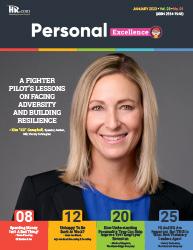




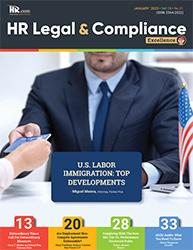

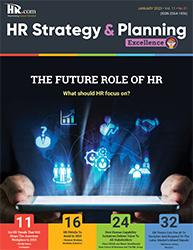
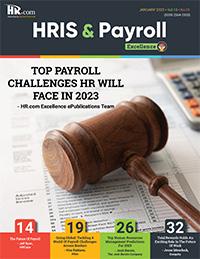

Like to submit an article? Use our online submission form or for more information go to www.hr.com/ExcellencePublications Publications 13 targeted publications to reach your audience Informing, Educating, Enlightening and Assisting HR professionals in their personal and professional development, the Excellence series offers high-quality content through the publications!


For more information: Phone: 1.877.472.6648 | Email: ePubeditors@hr.com | www.HR.com/epubs Leadership Excellence April 2023



 - Brett Farmiloe, Founder/CEO, Terkel.io
- Brett Farmiloe, Founder/CEO, Terkel.io




















 Dave Ulrich
Rensis Likert Professor, Ross School of Business, University of Michigan Partner, The RBL Group
Julie Winkle Giulioni Author, Virtual /Live Keynote Presenter, Inc.’s Top 100 Leadership Speakers
Dr. Beverly Kaye CEO, BevKaye&Co.
Dave Ulrich
Rensis Likert Professor, Ross School of Business, University of Michigan Partner, The RBL Group
Julie Winkle Giulioni Author, Virtual /Live Keynote Presenter, Inc.’s Top 100 Leadership Speakers
Dr. Beverly Kaye CEO, BevKaye&Co.





 By Abraham Gonzales-Pollick, Vensure Employer Solutions
By Abraham Gonzales-Pollick, Vensure Employer Solutions


 By Jason Richmond, Ideal Outcomes, Inc.
By Jason Richmond, Ideal Outcomes, Inc.







 Karl Robinson, CEO, Logicata
Karl Robinson, CEO, Logicata


 Inbar Madar, Founder and Business Consultant, MI Business Consulting
Inbar Madar, Founder and Business Consultant, MI Business Consulting

 By Natasha Nicholson, Kantola Training Solutions
By Natasha Nicholson, Kantola Training Solutions



































